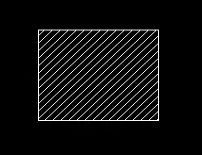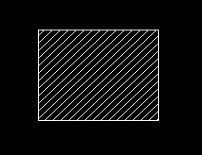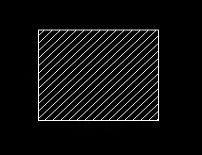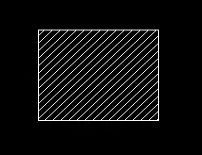The basic concept of the digital backend to be introduced today is the Placement Blockage. Placement blockage is an artificial constraint that people often use in floorplans. Can effectively control the density of the area. Thereby avoiding the problem of congestion and improving the efficiency of routing.
There are many types of Placement blockage, which are divided into 9 types, which correspond to hard, hard_macro, soft, partial, category, rp_group, allow_buffer_only, allow_rp_only, register.
Hard: is the most restrictive blockage. In this area, you cannot place an instance at any stage such as place, legalize, optimize, or CTS.

Hard blockage
Hard_macro: Hard macros are not allowed in this area. In the automatic macro placement stage, the tool will not place macros in this area.

Hard macro blockage
Soft: In this area, the instance is not allowed to be placed in the placement stage, but the instance is allowed to be placed in the legalize, optimize stage.

Soft blockage
Partial: If you want to use a partial blockage, you first need to artificially design a blocking percentage value. In this area, the tool blocks the instance of the obstruction value. If the block percentage value is set to 40%, it means that the area will block at least 40% of the instance, which means that the area can be placed up to 60% of the instance. It is worth noting that the partial blockage only works during the placement phase. Does not work in the legalize, optimize stage.

Partial blockage
Category: This is a special partial blockage. In some areas, if we don't want to place a specified instance, we can specify these instances as a category, and then the areas below the category blockage will not place these instances.

Category blockage
Rp_group: This is also a special partial blockage. The area of ​​the rp_group blockage is not allowed to place the relative placement instance. It is rarely used. It may be used if the children's shoes with the relative placement flow are useful.

Rp_group blockage
Allow_buffer_only: This is also a special partial blockage. The blockage area only allows buffers to be placed. Of course, it only works in the placement phase. It does not work in the legalize and optimize phases.

Allow_buffer_only blockage
Allow_rp_only: This is also a special partial blockage. The blockage area only allows the placement of the relative placement group, but the hard macro can still be placed.

Allow_rp_only blockage
Register: This is also a special partial blockage. The blockage area does not allow register to be placed. Of course, it only works in the placement phase. It does not work in the legalize and optimize phases.

Register blockage
Circular Connectors
Circular connectors, also called [circular interconnects," are cylindrical, multi-pin electrical connectors. These devices contain contacts that transmit both data and power. Cannon (now ITT Tech Solutions) introduced circular connectors in the 1930s for applications in military aircraft manufacturing. Today, you can find these connectors in medical devices and other environments where reliability is essential.
Circular Connectors is designed with a circular interface and housing to quickly and easily connect and disconnect signal, power, and optical circuits. Circular connectors are often preferred in military, aerospace, and industrial applications: these can be connected and disconnected without the use of coupling tools such as torque wrenches. Antenk`s circular connectors offer rugged solutions that have been engineered for reliable performance in a wide variety of harsh environment applications.
I/O connectors provide secure electrical contact and smooth, safe disconnect. They are used across a range of industries for communications devices, business equipment and computers. Top considerations when purchasing I/O connectors include pinout, gender, voltage rating, contact plating, and termination style.
Types of Circular Connectors
Circular connectors typically feature a plastic or metal shell surrounding the contacts, which are embedded in insulating material to maintain their alignment. These terminals usually pair with a cable, and this construction makes them especially resistant to environmental interference and accidental decoupling.
Circular I/O Connectors Types
Audio Connector
BNC/TNC Connector
DC POWER Connector
Mini din connector
DIN Connector
M5/M8/M12/M16/M23 PP9 Connector
SMA/SMB/FME Connector
RCA Connector
MCX MMCX Connector
Power Connector,Circular I Connectors,Circular O Connectors,Circular Power Connector,SMA/SMB/FME Connector,RCA Connector,MCX MMCX Connector,and we are specialize in Circular O Connectors,Circular Power Connector
ShenZhen Antenk Electronics Co,Ltd , http://www.coincellholder.com